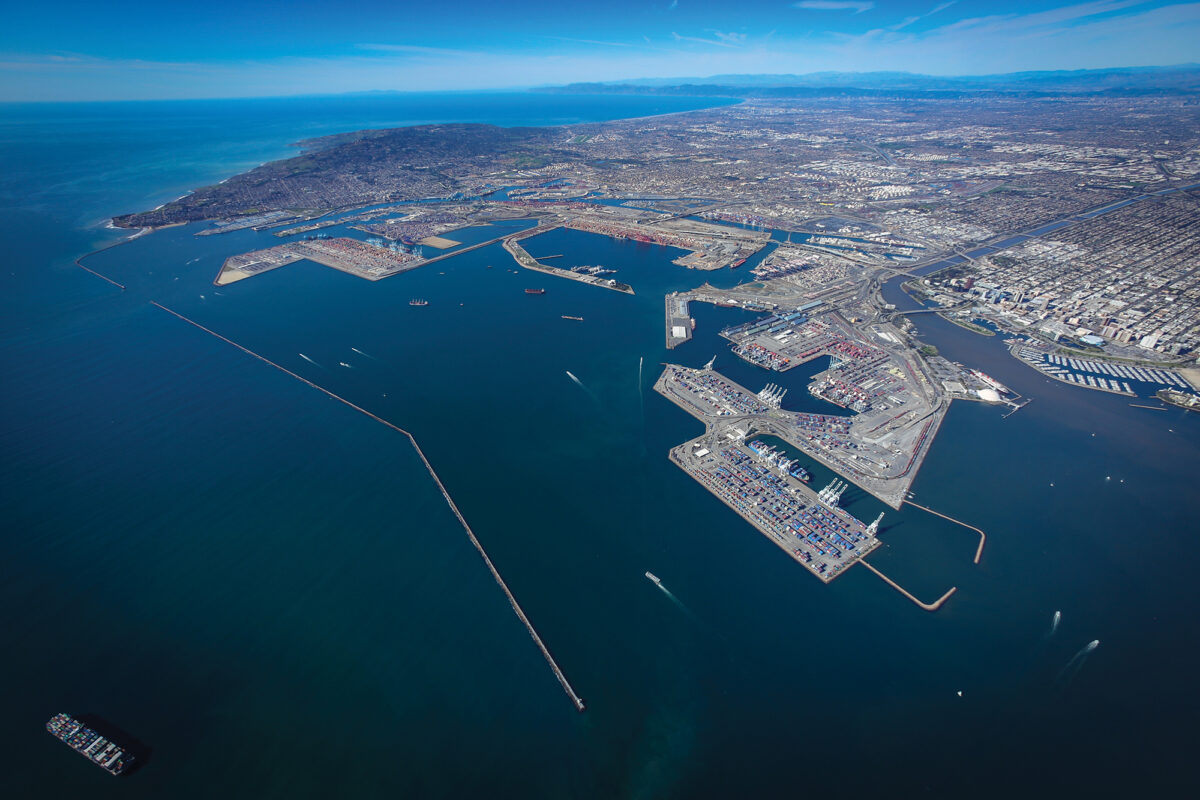
The Port of Long Beach is expansive, made up of 3,520 acres of land and 4,600 acres of water with 10 piers and 80 berths. The city’s port authority, however, does not own all of this area, with dozens of acres owned by private companies.
But it appears port officials are looking to change that.
In September, the port announced the purchase of 28.6 acres—about 25% of which is submerged—in the heart of the Harbor District. The waterfront site is made up of three parcels on the north end of Pier D and is currently owned by Sioux Falls-based building materials production and bulk cargo transportation company L.G. Everist Inc.
The port has agreed to pay more than $65.5 million for the property, which includes a heavy cargo boat ramp used primarily for unloading large rocks and other dry bulk construction materials, according to the announcement.
Once the transaction is complete, the port will take over the leases of the seven tenants that operate on that portion of Pier D. Tenants include Sause Brothers, Connolly Pacific, SBA Communications, Gambol Industries, Polaris Mineral, Robertson’s Ready Mix and Subsea Global Solutions.
“We’re going to maintain the status quo in terms of the operations of those businesses, and we’re going to support them,” Port of Long Beach Executive Director Mario Cordero said. “In the long term, it is another opportunity for the port authority to have land at our disposal.”
Combined, the leases are expected to bring in $3.5 million in revenue annually, according to port officials.
Assuming the purchase is completed, there will still be more than 60 acres of privately owned land within the Harbor District, not including the Valero refinery, according to port spokesman Lee Peterson. Plains All American’s fossil fuel tank farm and NRG’s power plant occupy 45 acres on Terminal Island, and the Craig family trust owns 14 acres on Pier D.
In the North Harbor area, there are 29 smaller parcels with 25 different owners, but port staff does not have an exact acreage available, Peterson said.
L.G. Everist has owned the property for about five decades, having purchased it from Craig Shipyard, according to port officials. The shipyard was operating on the property prior to state approval for a commercial seaport in Long Beach in 1911.
When and if more of the privately owned parcels become available, the port will work to purchase them, Cordero said. Since summer of last year, the port has experienced an unprecedented cargo surge, causing delays and forcing many ships to sit idle off the coast. One strategy for alleviating congestion was to set up additional container staging areas on unused land.
“We certainly want to take advantage of opportunities that are available to us,” Cordero said, “because we are learning more and more how important land availability is to the port.”

